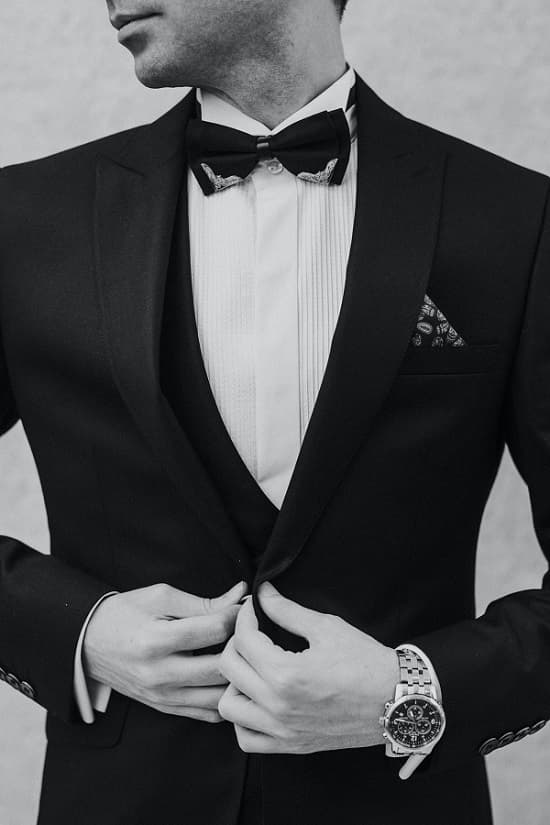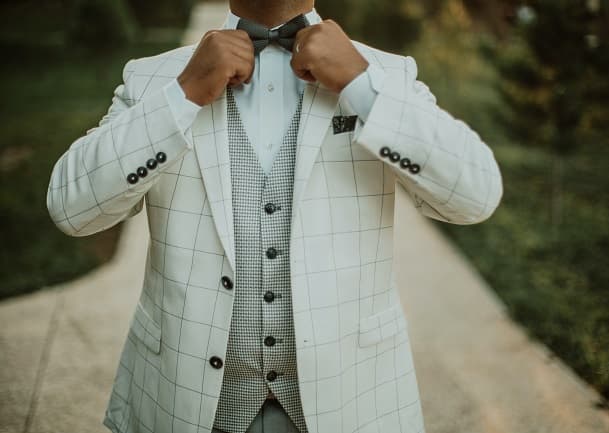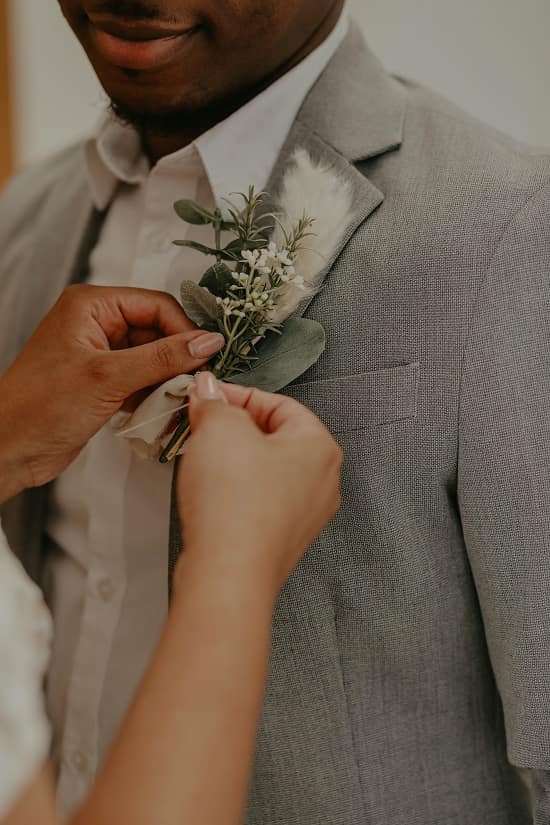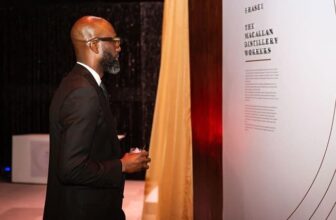The Definitive Guide To Differentiating Tuxedos From Suits
When it comes to formalwear, knowing the difference between a tuxedo and a suit can make all the difference. While they may appear similar at first glance, there are distinct features that set them apart in terms of style, formality, and occasion appropriateness. The key lies in understanding the subtle nuances and details that differentiate tuxedos from suits.
Whether you are attending a black-tie event or preparing for a formal occasion, this guide will provide you with the knowledge you need to make the right choice. Read on to learn more about the key differences between tuxedos and suits and how to confidently choose the appropriate attire for any occasion.
Understanding the key differences between tuxedos and suits
Uptill today, many men are still finding themselves confused about the difference between a tuxedo and a suit. While both options are popular choices for formal events, the variations in design, fabric, and appropriate occasions set them apart.
Firstly, let’s explore tuxedos. These sartorial masterpieces are typically characterized by their satin facing on the lapels, buttons, pocket trim, and a satin stripe down the side of the trousers. The jacket style may vary, with options such as peak lapel, shawl collar, or notch lapel, but the satin accents remain a distinguishing feature. Tuxedos are generally worn with a formal dress shirt, bow tie, and cummerbund or vest, creating an elegant and polished look.
On the other hand, suits generally consist of a jacket and trousers made from the same fabric, creating a more streamlined and cohesive look. Suits can be worn for a variety of occasions, from business settings to weddings and semiformal events. While suits do not typically feature satin accents like tuxedos, they offer more flexibility in terms of colors, patterns, and materials. This allows individuals to express their personal style while still maintaining a polished appearance.
 Photo: Alvin Mahmudov/Unsplash
Photo: Alvin Mahmudov/Unsplash Another significant difference between tuxedos and suits lies in the level of formality they represent. Tuxedos are considered the pinnacle of formal attire and are reserved for events such as black-tie galas, weddings, and high-end social gatherings. Suits, on the other hand, offer a wider range of formality and can be worn to anything from business meetings to cocktail parties, depending on the fabric, color, and accessories chosen.
In summary, tuxedos and suits differ in their design, fabric, and appropriate occasions. Tuxedos boast satin accents on the lapels, buttons, and trousers, while suits feature a more streamlined and cohesive design. Tuxedos are reserved for formal events, while suits offer greater versatility for various occasions. By understanding these key differences, men and women can confidently choose the appropriate attire to make a lasting impression at any formal affair.
Fabrics and patterns that distinguish tuxedos from suits
Fabrics and patterns play a crucial role in distinguishing tuxedos from suits. The choice of fabric can make a significant impact on the overall appearance and formality of the garment. Tuxedos are typically made from more luxurious fabrics such as velvet, silk, or wool. These fabrics have a rich and luxurious feel, adding elegance and sophistication to the ensemble.
When it comes to patterns, tuxedos often feature more ornate and extravagant designs compared to suits. One of the most popular patterns for tuxedos is the classic black-and-white combination, known as the “black tie” pattern. This pattern consists of a black jacket paired with crisp white dress shirts and a black bowtie. It creates a timeless and formal look, perfect for black-tie events and formal occasions.
In contrast, suits are generally made from more versatile and everyday fabrics like wool or cotton. These fabrics are still high-quality and durable but are less opulent compared to those used for tuxedos. Suits often come in a wide range of patterns, including pinstripes, checks, and solids. These patterns can add a touch of personality and style to a suit, making it suitable for various occasions, from business meetings to semi-formal events.
Another significant distinction between tuxedos and suits lies in the presence of satin or silk details. Tuxedos typically have satin or silk lapels, buttons, and stripes down the sides of the pants. These satin or silk elements create a striking contrast to the main fabric and add a touch of luxury to the tuxedo. On the other hand, suits typically do not have these satin or silk details, maintaining a more understated and versatile appearance.
It is worth noting that while tuxedos have a more formal and elegant aesthetic, suits offer greater versatility and can be worn in a wide range of settings. Therefore, understanding the distinctions between fabrics and patterns is crucial in choosing the appropriate attire for any given occasion.
Occasions where tuxedos are appropriate
When it comes to dressing for formal events, tuxedos are considered the gold standard of elegance and sophistication. While there may be some variation depending on cultural norms and personal preferences, there are several occasions where wearing a tuxedo is considered appropriate and expected.
 Photo: Alvin Mahmudov/Unsplash
Photo: Alvin Mahmudov/Unsplash One such occasion is black-tie events, which typically include formal dinners, galas, award ceremonies, and high-profile weddings. These events often have a specific dress code that stipulates the wearing of a tuxedo. By adhering to this dress code, you not only show respect for the event itself but also for the hosts and other guests.
Another occasion where tuxedos are appropriate is white-tie events, which are even more formal than black-tie events. White-tie events include state dinners, royal ceremonies, and operas. Attending such events requires wearing a full formal tuxedo ensemble, including a tailcoat, white bowtie, and formal accessories such as gloves and cufflinks.
Tuxedos are also commonly worn for high-end corporate events, particularly those involving important meetings or conferences. In these situations, a tuxedo can convey professionalism and command respect, especially if the event or occasion calls for attendees to dress in a more formal manner.
It’s worth noting that individual organizations may have their own specific dress codes and expectations, so it’s essential to consult the event invitation or inquire with the organizers to ensure you are appropriately attired.
While tuxedos are primarily associated with evening events, they can also be worn on certain daytime occasions. For example, daytime weddings that specify a formal dress code may require guests to wear a tuxedo. Additionally, prestigious daytime functions, such as high-profile business luncheons or charity events, may call for a more polished level of attire, making a tuxedo fitting.
In summary, tuxedos are appropriate for a variety of occasions, including black-tie and white-tie events, high-end corporate functions, and certain daytime events. By understanding the specific requirements and expectations of each occasion, you can ensure that you are dressed appropriately and make a lasting impression with your impeccable style.
How to accessorize a tuxedo or a suit
Accessorizing a tuxedo or a suit can elevate your overall look and make a lasting impression. Whether you’re attending a formal event, a business meeting, or a wedding, choosing the right accessories is essential. In this section, we will provide you with expert tips on how to accessorize your tuxedo or suit to perfection.
-
Neckwear:
The tie or bowtie is a crucial accessory that adds a touch of sophistication to your attire. For a tuxedo, opt for a classic black bowtie, while for a suit, you can choose from a variety of tie options that complement your outfit. Make sure the tie or bowtie is properly knotted and in harmony with your shirt and jacket.
-
Pocket Squares:
A pocket square is a small accessory that can make a big impact. Choose a pocket square that complements your tie or bowtie, but don’t be afraid to experiment with patterns and colors. Fold it neatly and place it in your suit or tuxedo jacket’s breast pocket for an added touch of elegance.
-
Cufflinks:
Cufflinks are a subtle yet impactful accessory that adds sophistication to your shirt sleeves. Choose cufflinks that match your overall style and the tone of the occasion. Silver or gold cufflinks with simple designs are safe options but don’t shy away from unique and eye-catching options if they suit the event.
-
Tie Bars and Tie Clips:
These accessories not only keep your tie in place but also add a touch of style to your outfit. Opt for a tie bar or tie clip that is smaller than the width of your tie and position it around the middle or slightly above it. Choose a design that complements your overall look without overpowering it.
-
Boutonnieres:
For formal events such as weddings or galas, a boutonniere can add a touch of elegance to your ensemble. Choose a fresh flower or a high-quality fabric flower that matches the color scheme of your outfit. Place it on the left lapel of your suit or tuxedo jacket and ensure it is securely fastened.
 Photo: Unsplash/Kadarius Seegars
Photo: Unsplash/Kadarius Seegars -
Belts and Suspenders:
While not always necessary, belts and suspenders can add a polished touch to your overall look. Match the color and material of your belt with your shoes for a cohesive appearance. Suspenders, on the other hand, can add a touch of vintage charm.
Remember, when accessorizing a tuxedo or a suit, it is important to strike the right balance. Avoid over-accessorizing, as it can detract from the overall elegance of your outfit. Experiment with different combinations and ensure that each accessory complements your attire and personal style. With the right accessories, you can confidently make a statement at any formal or professional occasion.






